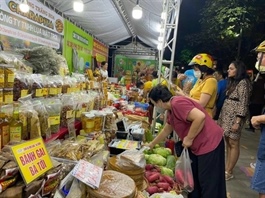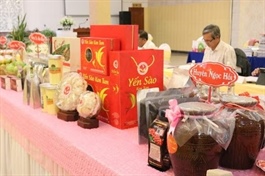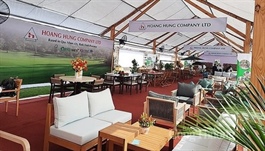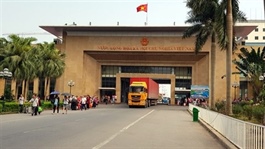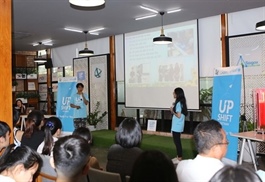Textile apparel exporters proactive in tackling issues
Textile apparel exporters proactive in tackling issues
Global economic headwinds herald a challenging year ahead for textile apparel export, forcing firms in the sector to embrace flexible remedies.
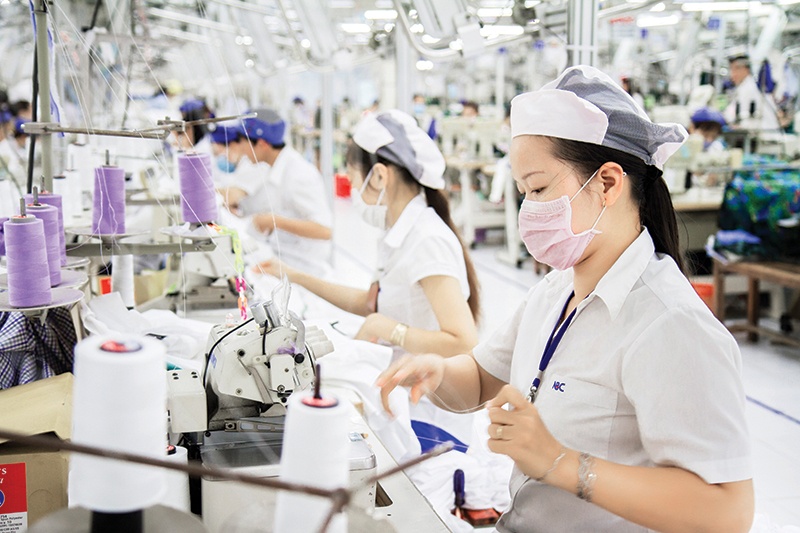
This year is deemed by many businesses in the textile apparel sector as an unpredictable one, fraught with risks.
Current growing tension in the Red Sea has cast detrimental impacts on exporters in the face of soaring shipping costs and significantly extended transportation time.
Pham Quang Anh, director of Dony Garment based in Ho Chi Minh City’s Binh Chanh district, revealed that the number of their export shipments to the US market was sinking last year, yet luckily growing order intake from the Middle East had offset for the shortfall.
The Red Sea tensions, however, have instant impacts on their most recent export shipment.
Accordingly, Dony sent a container of products to Jordan in December 2023, but only in late February 2024 did their business partner receive the products.
Not only the Middle East, the logistics cost to the US or Russia has also eyed a spike, placing mounting difficulties on firms.
Of note, only after receiving products in full, the partner in Jordan continues to place another order, meaning longer transportation casts a big influence on the company’s production and business plans.
“Before the Red Sea tension erupted, the shipping cost to the Middle East fetched around $1,550 per 40-feet container. This rate soared to around $6,000 after 20 days of tension, before cooling down to $3,000 at present, which is still double compared to previously,” said Anh.
Not only the Middle East, the logistics cost to the US or Russia has also eyed a spike, placing mounting difficulties on firms.
For Viet Thang Jean Co., Ltd. based in Ho Chi Minh City’s District 1, doubled delivery cost and longer transportation time from two to three weeks have directly affected their fashion items as well as the money flow.
“Red Sea conflicts have prolonged the time for delivery. For fashion products, late delivery directly affects sale, forcing us to take on air transport. Based on our calculation, each item on air transport is $1 more costly compared to sea route delivery,” said Pham Van Viet, chairman of Viet Thang Jean.
Representatives from Vietnam Footwear and Handbag Association and Vietnam Textile Apparel Association revealed that if the situation continued, impacts on new order placement could become more apparent, particularly from the second quarter of this year.
Tran Van Quy, CEO of Trung Quy Textile Garment Co., Ltd. based in the southern province of Long An revealed that albeit the company has tried to avail of markets around the world such as the US, Canada, Japan, South Korea, and Europe, in this difficult time they are set to tap the markets strongly facing the least impacts from conflicts to minimise pushing up the product price tags.
“Firms could hardly foresee all difficulties and negative impacts if just focusing on a single market. Hence, each firm needs to ramp up efforts for market diversification, accept lower profit and longer time, in exchange for safe business operation,” Quy said.
As such, Viet Thang Jean has bolstered development in Australia and Canada, combined with expanding online sale in the domestic market.
In the case of Dony Garment, Quang Anh said that the Red Sea tension had ushered in a new direction, helping the firm to clinch export orders in the new market.
“After many orders to Europe and Africa were affected due to longer journeys, we decided to increase marketing to Asia, most recently Cambodia. Unexpectedly, Asian markets have now rescued the company’s export value. As such, our revenue saw a 21 per cent jump in 2023, and is expected to inch up 15 per cent this year,” he said.



